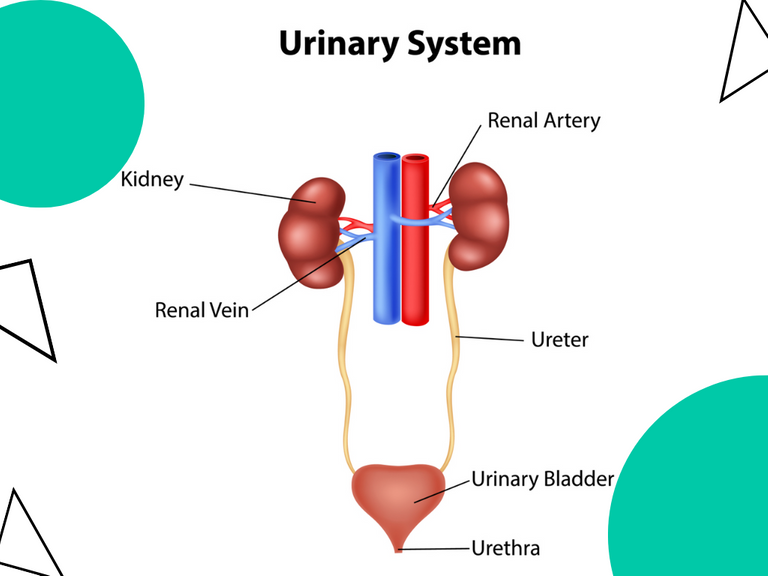The Urinary System and the functions
Greetings to all and sundry on this platform once again. As a biochemistry student, I researched "The Urinary System" today and decided to share it with you guys here. I hope that you will enjoy it and also learn from it. Stay tuned with me as I discuss this topic in my article.

The urinary system serves as an excretory system in the human body. Generally, there are four excretory systems which are the urinary system, skin, bowel, and lungs. The Urinary System is composed of the kidney, ureter, urinary bladder, and urethra. They all perform different important functions.
The kidneys are responsible for the removal of waste products, maintaining pH, and removal of excess salts and water from the blood. The urinary bladder serves as the storage of urine or the reservoir of urine. Ureters are responsible for transferring urine from the kidneys to the bladder. Lastly, the urethra is responsible for the transfer of urine to the outside of the body.
Kidneys: are a pair of organs that secretes waste products and are located on the posterior abdominal wall with each situated at each side of the vertebral column. The right kidney is slightly lower than the left kidney whilst the left kidney is also a little nearer to the median plane that the right kidney. The kidneys are bean-liked shaped.
The kidneys are reddish brown in color and they have about 11 cm in length, 6 cm in width, and 3 cm in thickness. The kidneys of males are higher in weight than those of females. The kidneys have three coverings which include the innermost fibrous capsule, the middle fatter capsule, and the false capsule.
The kidneys perform the following functions;
regulation of blood volume and blood pressure. It also plays a role in regulating the osmolarity of body fluids. It regulates the count of RBCs and secretes erythropoietin. It is responsible for eliminating waste products, and also filtering blood plasma. The kidneys also detoxify free radicals and drugs and are also involved in the gluconeogenesis process. Let's take a look at the ureter as well.
The Ureters are also paired and it's narrow, thick muscular tubes that transport urine from the kidneys to the urinary bladder. Each ureter is about 10 inches long and 3mm in diameter. The ureter is divided into two parts which are;
from the pelvic brim to entry into the urinary bladder i.e. the pelvic part and the site of origin to the pelvic i.e. the abdominal part.
The Urinary Bladder is also a hollow muscular organ that serves as a reservoir for urine that is received from the kidneys. It stores the urine for some time and then later discharges it as it gets full. The urinary bladder is located within the pelvis of the human body. It has a mean capacity of 220 ml and when filled above that amount can cause pain.
The urinary bladder is a pyramid shape and has four sides, four angles, an apex, a neck, and two lateral angles. The urinary bladder has three layers and they are the outer layer made of loose connective tissues, the middle layer is made of smooth muscle and elastic fibers, and then the inner layer which is lined with transitional epithelium.
The Urethra which serves as the passage of urine is extended from the neck of the bladder to the exterior. It is about 20 cm long in males and about 3 to 4 cm long in females. The shortness of the urethra in females is the cause of more urinary tract infections in females than in males. It is important for us to learn about the urinary system as it is one of the important excretory systems in the human body.
The references given below are sites where you can learn more about the urinary system.
Reference 1
Reference 2
Reference 3
Reference 4

Thanks for your contribution to the STEMsocial community. Feel free to join us on discord to get to know the rest of us!
Please consider delegating to the @stemsocial account (85% of the curation rewards are returned).
Thanks for including @stemsocial as a beneficiary, which gives you stronger support.